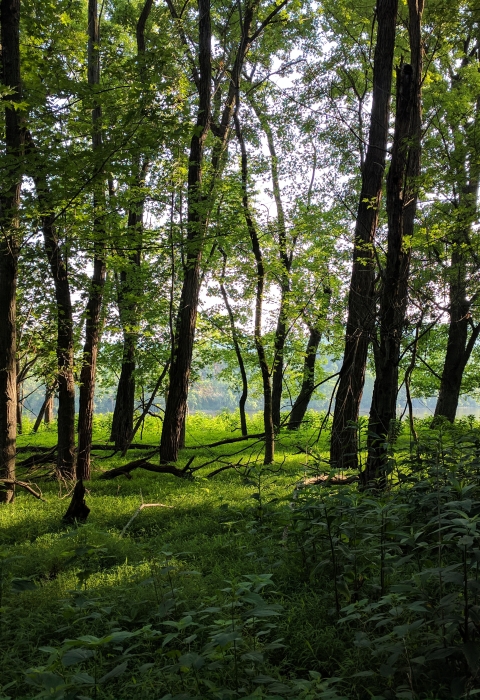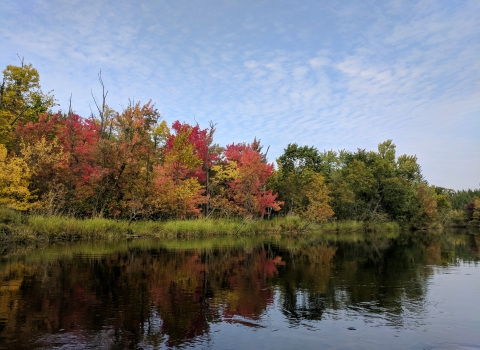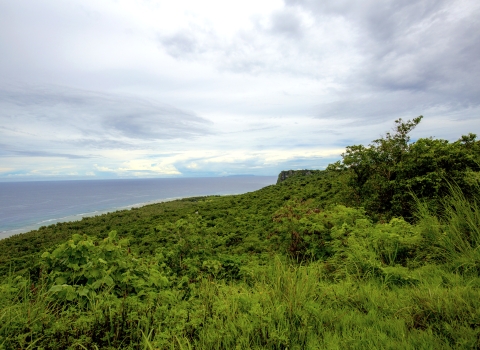Adopted from “American Indian Sites Eroding,” the Times, Beaver Newspapers, Inc.:
“Ohio River islands were formed as the last Ice Age ended 10,000 to 15,000 years ago, according to Patty Morrison, a wildlife biologist for the island refuge. Water from melting ice carved the present Ohio River Valley and deposited millions of tons of sand, gravel and other rocky material throughout. The islands are basically mounds of sand and rock up to 100 feet deep, Morrison said.
At the turn of the 20th century, Beaver County had six islands dotting the Ohio River between Aliquippa and Georgetown. Only Phillis and Georgetown remain. The others were lost to industry and flooding.
As the islands and river evolved, they became havens for wildlife. That attracted prehistoric Americans, who relied on the rivers and forests for food. Archeological studies of Phillis Island turned up artifacts left behind by those inhabitants during the Paleo-Indian Period (10,000 to 16,000 years ago), the Archaic Period (3,000 to 10,000 years ago), and the Woodland Period (1,000 to 3,000 years ago).
Contemporary history of the islands is sketchy. Records at the Beaver County Historical Research Center in Beaver Falls indicated that Phillis Island was “settled” by Charles Phillis, a boat builder and member of one of the county’s pioneer families. A map of Greene Township in Caldwells’s 1876 “Illustrated Pictorial Atlas of Beaver County” shows a house on the island. The owner was Thomas Moore, but there was no other information.
Gordon Campbell (b. 1920) said his parents farmed Phillis Island for years and took their produce to market in East Liverpool, Ohio, via a skiff. The island Campbell knew as Phillisey was a 108-acre farm for more than 100 years (the size had been reduced to 20 acres by a mid-20th century gravel dredging operation). His mother’s family – her maiden name was Brenneman – bought the island in 1892. Several generations farmed it, including Nancy Campbell and her husband, Walter. They had two houses on the property, along with a barn and outbuildings. They also had a family cemetery. Gordon’s parents buried several children, who died during infancy, on the property.
He remembers a story about his mother cooking dinner in the family home on Phillis Island during a period of high water. The kitchen floor was made of boards, he said, and floodwater was rising through the floorboards. Nancy Campbell just kept on cooking. “My mother wasn’t scared of anything,” he said, laughing.
In the days before dams raised the water level, people could walk across the Ohio during low water. Campbell’s dad would drive his horses across a channel between the island and Shippingport. When water was high, he would haul them across in a flatboat. “He’d take a coal shovel and paddle across that channel,” Gordon said. In the winter, when ice covered the channel, Walter Campbell would fit the horses with spiked shoes and walk them across the ice.
The family grew just about everything, including corn, potatoes, tomatoes, green vegetables and fruit. They sold the stuff in East Liverpool, rowing the produce across the Ohio. Gordon said city residents couldn’t wait for the fresh produce to arrive. Gordon, who was born on the island, lived there until his family sold it and moved inland in 1923. He was 3, but still has hazy memories of learning to swim in the river and eating those big, yellow delicious apples.
Phillis and Georgetown Islands are now inhabited by turtles, frogs, ducks, deer, beavers, raccoons and other four-legged critters. They’re also a haven for all types of birds, and the river around the islands is abundant with fish. Phillis Island, the larger of the two, has a variety of hardwood trees, including locust, black cherry, oak, walnut and hickory. One of the most remarkable things about the islands, according to Morrison, is a resurgence of freshwater mussels. She had identified 13 species of mussel living in the waters off Phillis Island, four of which – papershell, mapleleaf, fawnsfoot and heelspliter – were believed to be extinct in Pennsylvania. “Each time we’ve come back to Phillis Island, we find new species returning to the river,” she said.
That means the river, once a sewer of industry and residents alike, is slowly rehabilitating itself. That rebirth includes the islands, which also are returning to their natural state after centuries of manmade abuse. Morrison said the trend should continue. “As long as the habitat is suitable and the water quality is good, I expect everything – the wildlife, the mussels and the fish – to continue to come back.” The islands, however, will need man’s help to survive.
Island Access: Ohioville Borough Boat Ramp, Calcutta Rd off SR 39/68, Midland, PA


